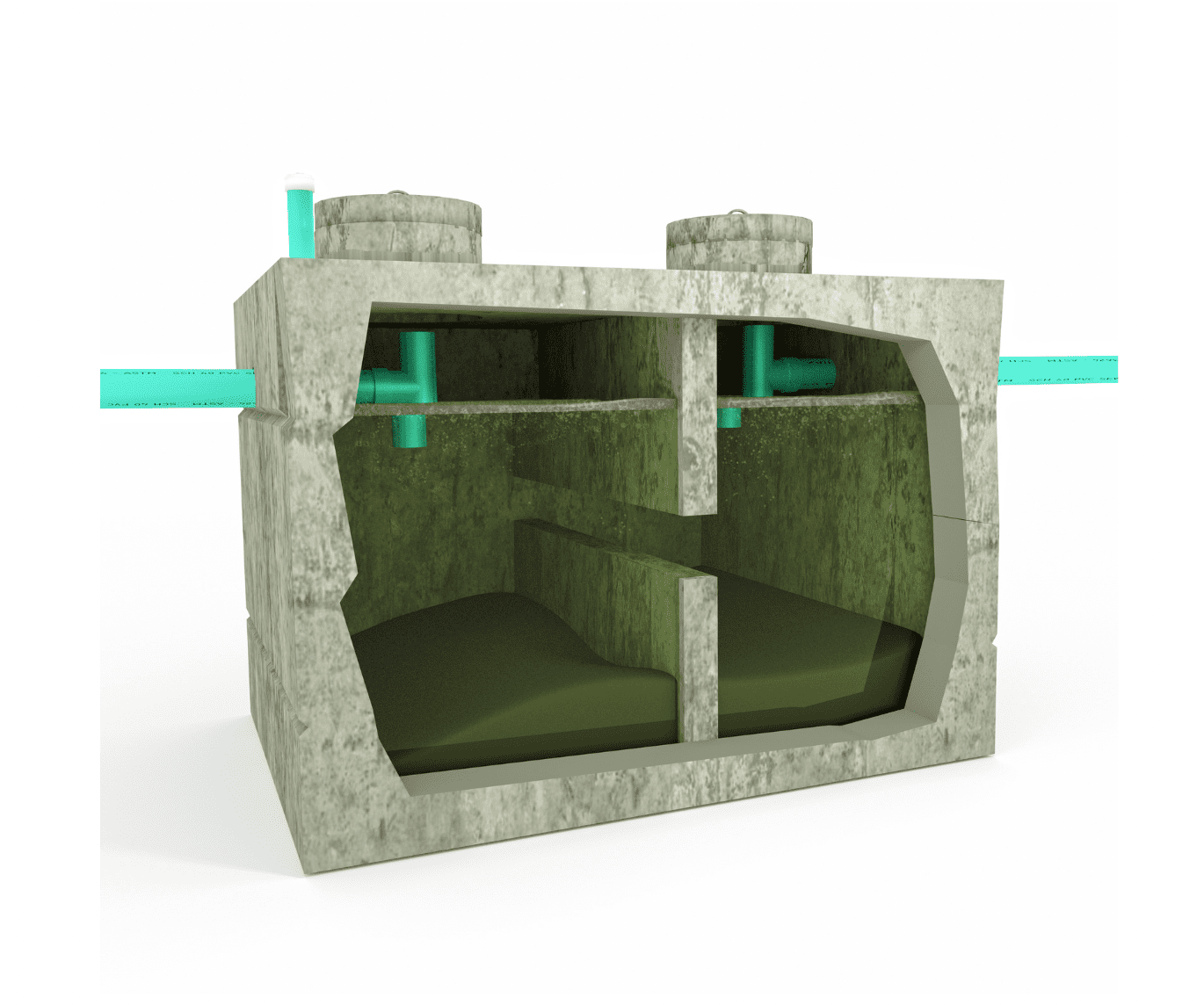Ever pumped out your septic tank and then, bam, it’s full again in no time? It’s pretty baffling, right? And for homeowners like us, it’s downright concerning.
After all, our septic systems are lifelines. They’re not just ‘out of sight, out of mind.’ Any hiccups can spell hazards, property damage, or just an outright headache.
But don’t worry! We’re here to crack this mystery wide open. We’ll kick things off with a breakdown of what’s normal for a septic tank level and what’s not.
Then, we’ll dive into the main culprits behind tanks filling up too fast after pumping. Let’s start!
Normal Septic Tank Levels vs. Full Septic Tanks
What’s Normal for Septic Tank Levels?

Think of your septic tank like a giant coffee cup. Solid stuff sinks to the bottom, just like coffee grounds. Oils and grease float on top, like that delicious creamer.
And in between? That’s the ‘liquid level’ – kind of like the coffee itself. When everything’s working right, this ‘coffee’ flows smoothly out into the drain field for more treatment.
Now, that liquid level should always be at the outlet pipe’s level. That’s the sweet spot for the tank to do its job. So, in a way, a septic tank is always ‘full’ but not overfilled or bulging at the seams.
What Do We Mean by a ‘Full’ Septic Tank?
When we say ‘full,’ we mean ‘too full.’ The tank’s contents are above that sweet spot, often reaching the tank’s lid or even overflowing.
This typically happens when there’s too much solid waste for the tank to handle, or there’s something blocking the liquid from flowing out.
Spotting the Difference: Normal vs. Overly Full Tanks
So, how can you tell if your tank’s just doing its job or if there’s a problem? Here are some tell-tale signs:
Drainage: A normal tank drains smoothly into the field. But if your tank’s too full? Backups and slow drainage are common.
System Health: A happy septic tank has a healthy balance of bacteria breaking down waste. Too full? That balance gets thrown off.
Odor: Normally, your tank shouldn’t stink. But a too-full tank might start raising a stink, literally.
Maintenance: Normally, you shouldn’t need to pump your tank too frequently. But if your tank fills up fast, you might need more service.
Recognizing these differences helps you spot issues early and keep your septic system running smoothly. Next up, we’ll tackle why septic tanks might get too full even after pumping.
Common Reasons Why Septic Tanks Become Full After Pumping
So, you’ve just had your septic tank pumped and it’s full again already? That’s not normal! Let’s dig into what might be going on.
You’re Using More Water
First up, your water usage. If you’re using more water than your septic system can handle, that could be why your tank’s filling up fast.
Got more people in the house? Installed a new hot tub? Changed up your water habits? All these can contribute.
You’ve Got Plumbing Leaks
Next, check for leaks. Drippy faucets, running toilets, or any sneaky leaks can add a lot of water to your system.
Since this extra water doesn’t come with extra waste, it might be easy to miss.
The Pumping Wasn’t Done Right
Did the pump truck really clean out your tank? If they didn’t go deep enough or missed a section of your tank, you could be left with a lot of waste.
And that can make your tank look like it’s filling up faster than it should.
Your Drain Field’s Not Doing Its Job
Your drain field is like the septic tank’s exit door. If it’s blocked or failing, the wastewater can’t get out. And that could make your tank fill up faster than normal.
You’ve Got Non-biodegradable Waste Buildup
Your septic tank’s a natural waste breakdown machine. But it can’t handle everything. Plastics, wipes, diapers, certain paper products – these don’t break down. And if they end up in your tank, they’ll just pile up, taking up space.
This pretty much covers the common culprits. Now it’s up to you keep an eye on your septic system.
Conclusion
We’ve learned how a normal septic tank should behave and what it means when it’s too full. We’ve realized that a happy septic tank has a balanced mix of solid waste, wastewater, and scum. And a not-so-happy one? Well, it’s like a party that’s way too crowded.
We’ve also discovered some common reasons why a septic tank might fill up fast, even after pumping. More water usage, plumbing leaks, bad pumping jobs, drain field failures, and non-biodegradable waste buildup are all usual suspects.
So, what’s the secret to a healthy septic system? Regular TLC, my friends! Watch your water use, check for leaks, be mindful of what goes down the drain, and schedule regular professional cleanings. Doing this can nip many issues in the bud.

